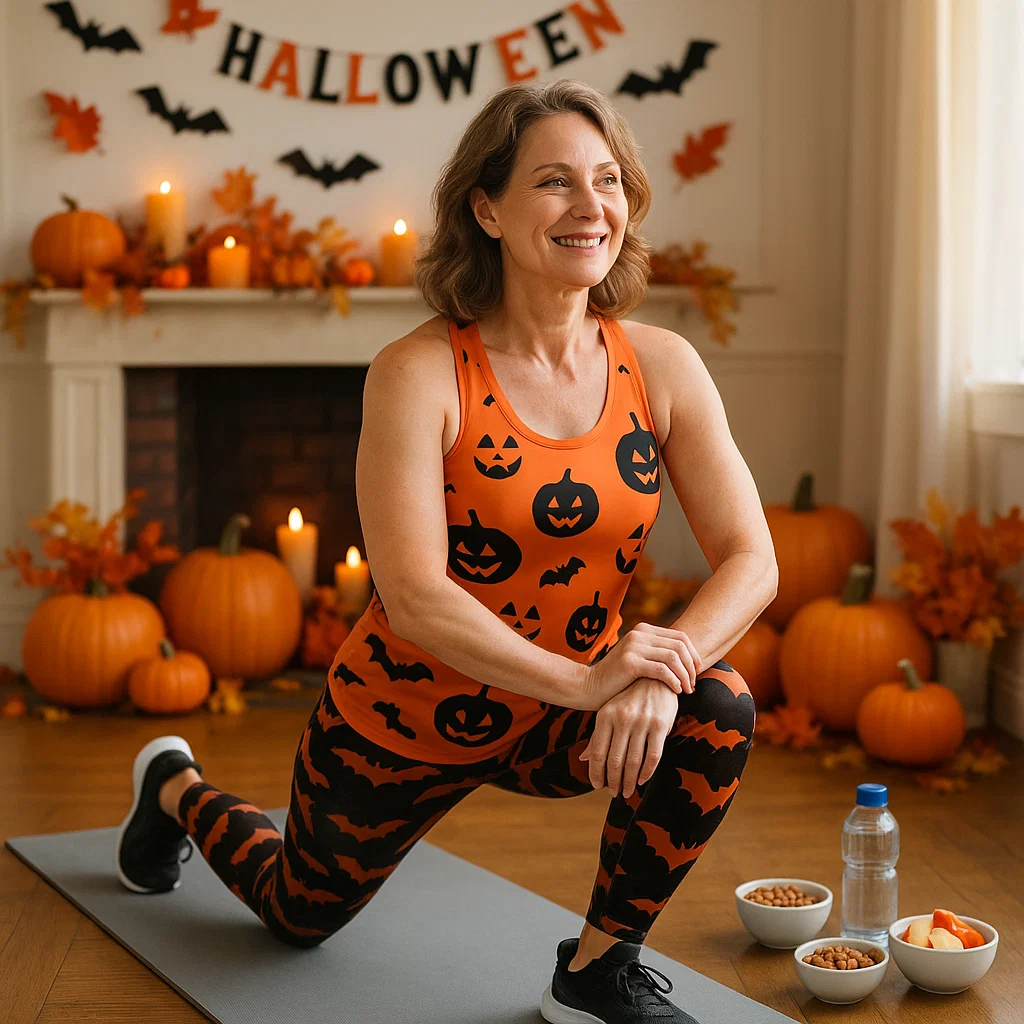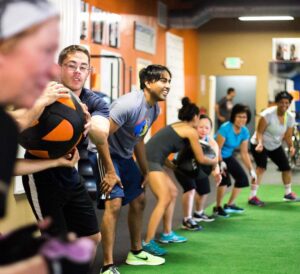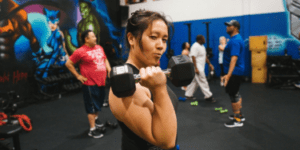Halloween can be a joyful night of costumes, community, and treats, but for adults over 40, it requires age-aware choices to protect long-term health while still enjoying the fun. This guide gives practical, physiology-informed advice on nutrition, fitness, safety, and mental well-being so you can celebrate without sacrificing bone density, muscle mass, metabolic control, or sleep. You’ll learn why sugar affects metabolism differently after 40, how to savor treats mindfully, joint-friendly Halloween workouts, and specific safety steps for walking, hosting, and costume planning. The article maps clear how-to lists, sample recipes, and ready-to-use fitness circuits tailored to low-impact needs, plus quick-reference EAV tables comparing candy swaps, exercise options, and common hazards. Read on for actionable tactics—portion rules, diabetic-friendly swaps, strength routines for bone health, hydration, and immune tips, and social engagement ideas—that let you enjoy Halloween now while protecting your long-term goals.
How Can Adults Over 40 Manage Sugar Intake and Enjoy Halloween Treats Mindfully?
Halloween candy delivers rapid carbohydrates that spike blood glucose and insulin, which adults over 40 process less efficiently due to age-related declines in insulin sensitivity and reduced muscle mass. These metabolic shifts increase the risk that repeated holiday binges contribute to fat gain, worsen glycemic control, and stress on cardiovascular markers over time. Dental erosion and inflammatory responses to frequent sugar exposure are additional short-term risks that compound long-term concerns. Understanding these effects makes it easier to plan mitigations—pairing sweets with protein, limiting frequency, and choosing lower-sugar alternatives to protect metabolic and dental health.
What Is the Impact of Halloween Candy and Sugar on Adults Over 40?
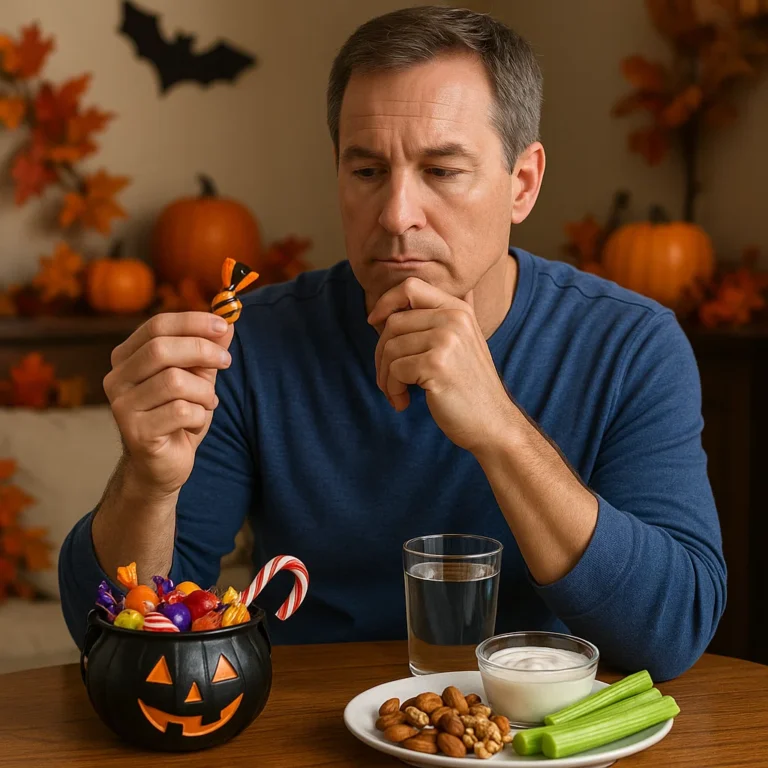
Halloween candy delivers rapid carbohydrates that spike blood glucose and insulin, which adults over 40 process less efficiently due to age-related declines in insulin sensitivity and reduced muscle mass. These metabolic shifts increase the risk that repeated holiday binges contribute to fat gain, worsened glycemic control, and stress on cardiovascular markers over time. Dental erosion and inflammatory responses to frequent sugar exposure are additional short-term risks that compound long-term concerns. Understanding these effects makes it easier to plan mitigations—pairing sweets with protein, limiting frequency, and choosing lower-sugar alternatives to protect metabolic and dental health.
How Can You Practice Mindful Indulgence and Portion Control on Halloween?
Mindful indulgence means deciding ahead how much and when you’ll eat sweets, using simple behavioral rules that reduce impulsive overconsumption and blunt glycemic impact. Start with a protein-rich snack before heading to events, set a firm portion rule (for example, one small treat after dinner), and eat slowly while fully savoring flavors to increase satiety. Tracking portions visually—small dish, one-piece rule, or saving treats for specific occasions—helps reinforce the habit and prevents late-night snacking that disrupts sleep and blood sugar. These steps create predictable boundaries that let you enjoy Halloween without undoing weeks of metabolic progress.
What Are Healthy Halloween Treat Alternatives and Low-Sugar Recipes for Seniors?

Swap high-sugar confections for fiber- and protein-forward options that satisfy the sweet craving while supporting satiety and stable glucose. Think dark-chocolate-dipped fruit, yogurt parfaits with nuts and pumpkin spice, roasted spiced chickpeas, or pumpkin-seed trail mixes that supply fiber, healthy fats, and protein. These recipes are easy to prepare, store well for handing out, and deliver micronutrients (potassium, magnesium) that support muscle and heart health. Choosing smaller portions of richer, nutrient-dense treats reduces total sugar intake while preserving the festive feel.
Intro to candy comparison table: below is a quick EAV-style comparison to help you visualize sugar content and practical swaps for common Halloween treats.
Candy Type | Sugar per Serving (approx.) | Healthier Swap |
Milk chocolate bar | 20–25 g | Dark chocolate square (70%+, 8–10 g) |
Gummy candies | 15–20 g | Dried fruit + nut bite (6–8 g sugar, +fiber) |
Candy-coated chocolate | 18–22 g | Single dark-chocolate-dipped orange peel (6–8 g) |
This table highlights that choosing smaller portions or substituting with fiber/protein-rich bites can cut sugar by half while improving satiety. Use swaps to maintain social rituals without excessive sugar loads.
Research indicates that holiday weight gain is a common concern, with behavioral strategies playing a key role in prevention.
Holiday Weight Gain Prevention: Behavioral Solutions for Overeating
People overeat during the holidays and gain on average 1.1 pounds from Thanksgiving to New Year’s Eve. Participant observers compiled over 100 different insights on factors cause people to overeat during the holiday season. Each trap that was identified was paired with some advice from that insider on how to prevent the overeating. Insights were categorized based the social aspects of the meal, the influence of proximate others, and the layout of the food. These indulgent insights will be useful to help prevent people from overeating during the holiday season and has the potential to prevent weight gain and health decreases that are paired with the winter months.
Fat-Proofing Halloween, Thanksgiving, and Christmas: Exploring Behavioral Solutions to Holiday Weight Gain, B Wansink, 1966
This table highlights that choosing smaller portions or substituting with fiber/protein-rich bites can cut sugar by half while improving satiety. Use swaps to maintain social rituals without excessive sugar loads.
How Can Adults Manage Sugar Intake If They Have Diabetes?
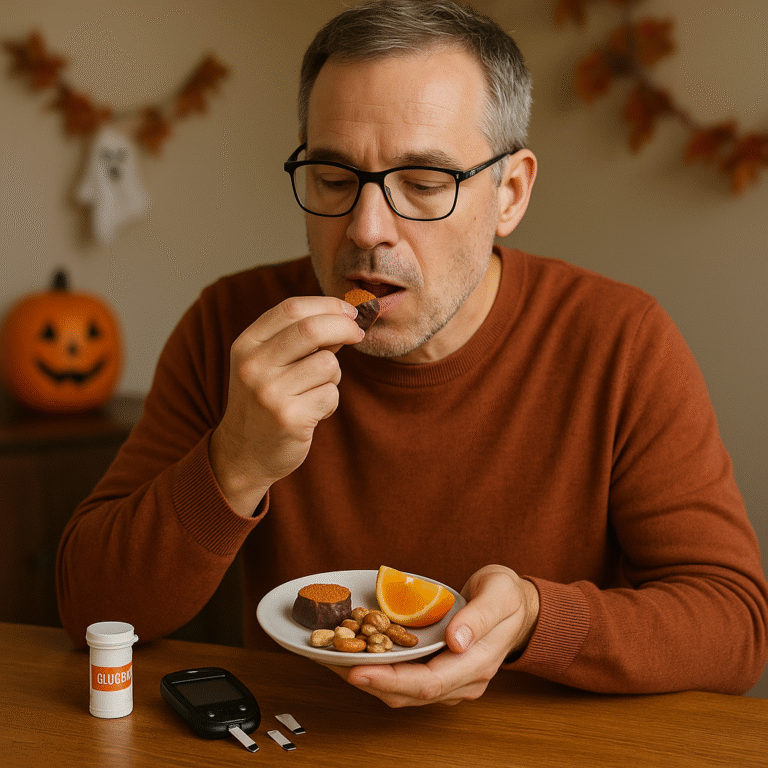
Adults with diabetes need tighter strategies: carbohydrate counting, pre- and post-prandial glucose testing, and timing treats relative to medications and meals are essential to avoid dangerous spikes. Pair any candy with lean protein or a small serving of healthy fat to slow absorption, and limit portions to a defined carbohydrate allotment (for example, 15–20 grams of carbs per treat instance). Communicate with your healthcare provider before making medication changes around holiday indulgences, and keep fast-acting glucose sources and monitoring supplies available when attending events. These measures let you participate in traditions while maintaining safety and glycemic control.
What Non-Food Treats and Alternatives Can Enhance Halloween Enjoyment?
Non-food treats preserve the celebratory ritual without metabolic cost and are ideal for families and community events; options include stickers, small toys, craft kits, glow sticks, coupons for activities, or donation-based treats that promote social good. These alternatives lower allergen risk, reduce temptation for frequent sugar intake, and promote intergenerational engagement through shared activities like craft nights or costume contests. Offering a mix of edible and non-edible choices at gatherings helps accommodate guests with diabetes, allergies, or weight-management goals. Integrating experiences—movie passes, a donation to a cause—turns Halloween into a memory-focused celebration rather than a candy-centric one.
What Are Effective Halloween Fitness Tips and Activities for Adults Over 40?
Maintaining movement around holidays helps offset extra calories, supports insulin sensitivity, and preserves muscle mass and bone health that naturally decline after 40. A pragmatic approach mixes low-impact cardio, mobility work, and brief strength sessions designed to be done before or after celebrations, and includes themed activities that keep engagement high without overtaxing joints. This section explains the physiological reasons to stay active at 40+, provides safe themed mini-workouts, ways to weave movement into festivities, and strength/flexibility routines that support longevity and balance. Use the exercise comparison table and the quick lists below as a menu you can adapt to fitness level and joint concerns.
Why Is Fitness Especially Important for Adults Over 40 During Halloween?
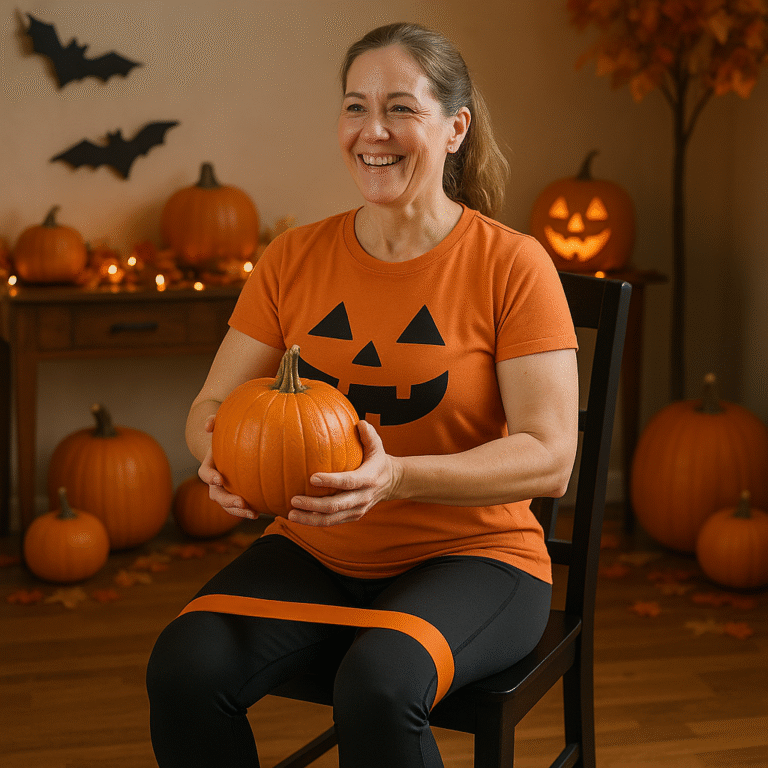
After 40, muscle mass and bone density decline gradually, and metabolic flexibility decreases, making habitual activity essential to preserve function and metabolic health. Regular exercise improves glucose disposal, supports resting metabolic rate through lean mass maintenance, and reduces fall risk by improving balance and strength. During holidays, activity also mitigates mood dips and stress, supporting sleep quality and social engagement. Recognizing these roles helps prioritize movement even when schedules are busy and indulgences tempt you to skip workouts.
What Are Safe and Fun Halloween-Themed Workouts for Older Adults?
Themed workouts make exercise social and enjoyable without high impact: pumpkin carries mimic farmer carries for grip and core, haunted-walk intervals alternate brisk walking with comfortable recovery for cardio, and seated dance or gentle aerobic circuits provide cardiovascular benefit with low joint stress. Each mini-workout includes simple progressions and safety cues—start with a short warm-up, choose weights that allow controlled form, and stop if joint pain occurs. These activities can be done in 10–30 minute blocks and adapted with chair variations or resistance bands to protect knees and hips.
Here are several Halloween-friendly activity ideas you can use at home or in community groups:
Pumpkin Carries: Short carries for 30–60 seconds to strengthen grip and core.
Haunted-Walk Intervals: 1–2 minutes brisk, 1 minute easy, repeat for 15–20 minutes.
Seated Dance Party: 15–20 minutes of rhythmic movement for cardio without impact.
Stair or Step Circuits: Short sets for leg strength and bone-loading.
Costume-Friendly Yoga: Mobility flow focusing on hips, shoulders, and spine.
These options are scalable and encourage both individual practice and family participation, making it easier to stay active during the holiday.
Maintaining a joint-friendly lifestyle through nutrition and weight control is crucial for managing chronic pain, especially for older adults.
- Joint-Friendly Lifestyle: Nutrition and Weight Control for Osteoarthritis
- We also discuss how weight control and good nutrition are important for managing chronic pain. For example, a child, age 4, comes home from a Halloween party with a crushing amount of candy. The treatment for osteoarthritis is a joint-friendly lifestyle. Eating a balanced diet and maintaining a healthy weight can help reduce stress on joints.
Chronic pain for dummies, 2011
These options are scalable and encourage both individual practice and family participation, making it easier to stay active during the holiday.
How Can You Incorporate Movement Into Halloween Festivities?
Integrate movement by scheduling short group walks before trick-or-treating, hosting active games at parties, assigning a “decorate-and-stretch” station, or turning candy distribution into a standing social opportunity instead of sitting. Micro-sessions—three 10-minute walks spread across the evening—accumulate meaningful activity and blunt post-treat glucose excursions. Encourage intergenerational activities like a costume parade that requires gentle marching, or volunteer to lead a neighborhood walk that combines safety with social engagement. Small, purposeful movement breaks keep energy levels stable and support digestion after richer meals.
Which Strength Training and Flexibility Exercises Support Longevity Over 40?

Key strength moves that preserve bone and muscle include multi-joint patterns: squats or sit-to-stand for legs, hinge movements (deadlift or hip hinge) for posterior chain, rows for upper-back strength, and push variations for chest and shoulders. Flexibility and mobility priorities target hips, shoulders, and thoracic spine to maintain range of motion needed for daily tasks and safe movement. A sample mini-program might include two sets of 8–12 reps for three compound movements twice weekly, combined with daily 10-minute mobility work. Regular progressive loading—gradually increasing resistance or volume—supports bone remodeling and muscle maintenance.
Intro to exercise comparison table: the following EAV-style table contrasts Halloween-themed exercises by impact level and joint considerations for quick planning.
Exercise | Impact Level | Joint Consideration |
Pumpkin Carry | Low | Favorable; use light weight and short duration |
Haunted-Walk Intervals | Moderate | Low knee stress if paced; use supportive shoes |
Seated Dance | Low | Excellent for joint pain; seated modifications easily applied |
This table helps match activities to individual joint health and fitness goals, enabling safe participation in festive routines.
How Can Adults Over 40 Stay Safe During Halloween Celebrations?
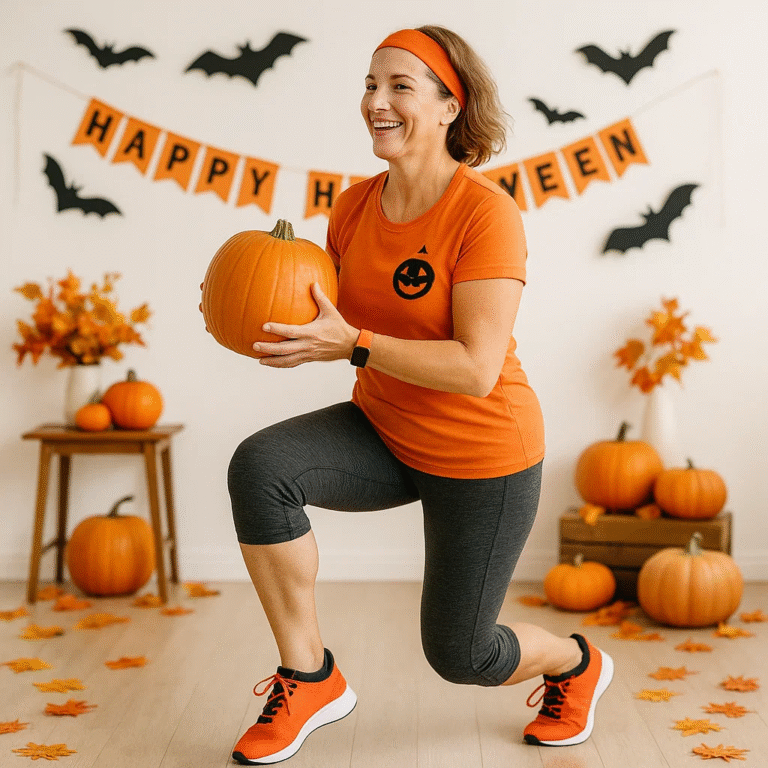
What Home and Outdoor Safety Tips Should Seniors Follow on Halloween?
Prioritize visibility and fall prevention: keep walkways well-lit, remove tripping hazards like hoses and loose rugs, and use battery-operated lights instead of open flames. When walking, choose reflective clothing, carry a flashlight, and stick to sidewalks and familiar routes; consider walking in groups or with an escort if balance or vision is reduced. Inside, secure loose cords and provide stable seating options at gatherings to reduce fatigue and fall risk. These simple adjustments make hosting and participating safer and more enjoyable for older adults.Intro to safety EAV table: the table below summarizes common hazards, risk level, and preventative steps to simplify preparation.| Hazard | Risk Level | Preventative Step |
| Poor lighting | High | Install battery-operated or solar pathway lights |
| Candles/open flame | Moderate | Use battery candles and secure decorations |
| Trip hazards (rugs) | High | Remove loose rugs and secure edges |
- Halloween Pedestrian Safety: Reducing Fatalities on the Holiday
- Prior studies of Halloween traffic risks have shown that the holiday is associated with an increased risk of pedestrian fatalities. This study was undertaken to systematically evaluate pedestrian fatality risks on Halloween and highlight opportunities for improved safety as pedestrian numbers increase.
How Can Adults Choose Costumes That Are Safe and Visible?
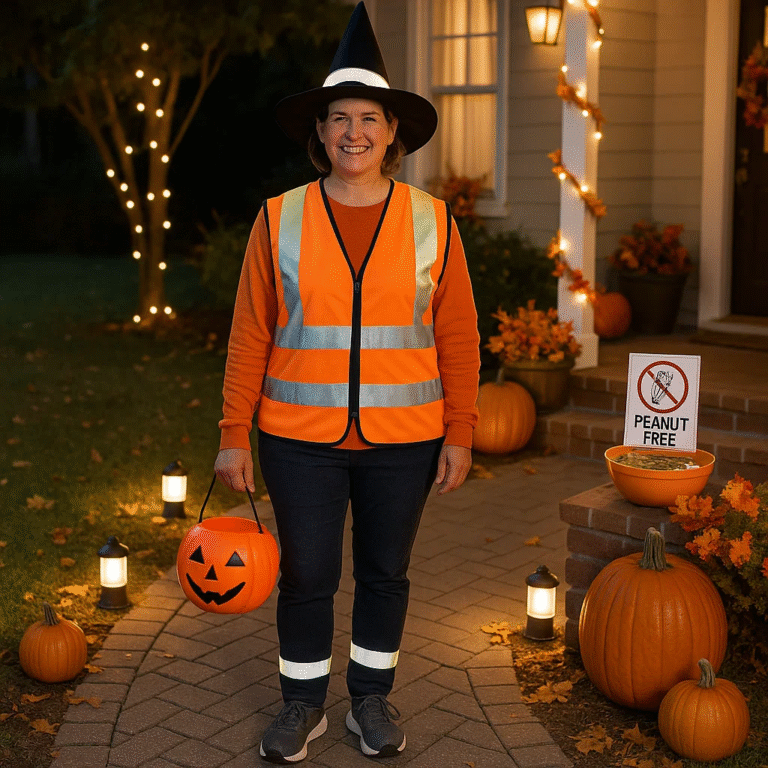
Choose costumes made of breathable, non-restrictive fabrics that allow full range of motion and avoid long trains or loose hems that increase trip risk; select non-flammable materials and test for comfort before an event. Enhance visibility with reflective tape, LED pins, or accessories that won’t snag on mobility aids; prioritize comfortable, supportive footwear to maintain balance and reduce joint stress. For those using canes or walkers, adapt costumes to fit mobility aids safely rather than trying to conceal them; simple modifications like attaching fabric decorations to the aid can preserve style and function. These choices keep the festive look while protecting your physical safety and comfort.
What Allergy Awareness and Food Safety Measures Are Important for Older Adults?
Older adults should be vigilant about allergens commonly present in candies—peanuts, tree nuts, dairy, soy, and gluten—and label any homemade treats clearly to protect guests with sensitivities. For parties, keep perishable foods refrigerated, avoid cross-contamination when serving, and store leftovers promptly; bacterial risk can increase with cooler outdoor temperatures or prolonged table display. Have a basic allergy plan—know signs of severe reactions and keep emergency contacts accessible—and consider offering non-food alternatives for trick-or-treaters with known allergies. These measures reduce acute medical risks and show consideration for diverse guest needs.
How Can Social Engagement Improve Mental Health During Halloween?
Halloween provides opportunities for intergenerational connection, volunteerism, and small-group activities that reduce loneliness and support cognitive and emotional health. Participating in community events, hosting a low-key costume night, or volunteering at a neighborhood trunk-or-treat fosters purpose, social bonding, and positive mood—key protective factors for mental health after 40. Structured activities like craft workshops or storytelling evenings encourage engagement and cognitive stimulation while being low-impact physically. Prioritizing social plans that match your energy and mobility sustains connectedness without overwhelming stress.
How Does Halloween Affect Long-Term Health Goals for Adults Over 40?
One night of indulgence is rarely decisive, but repeated holiday behaviors—late nights, excess sugar, disrupted routines—can erode long-term goals around weight, glycemic control, and sleep quality if left unchecked. Hydration, immune support, stress management, and smart pre- and post-event planning safeguard resilience, preserve training adaptations, and reduce the chance of setbacks. This section ties single-night decisions to long-term outcomes and gives a preventative checklist for readiness and recovery that aligns with bone, muscle, metabolic, and mental health priorities.
Why Is Hydration and Immune Support Crucial During Halloween?
Hydration influences energy, cognitive function, and glycemic responses; even mild dehydration can exacerbate fatigue and make overeating more likely. Adequate intake of fluids and nutrient-rich foods—vitamin C, zinc, protein—supports immune resilience during a season when colds increase and social gatherings raise exposure risk. Practical tactics include drinking a glass of water before attending events, keeping electrolyte-balanced beverages handy if consuming alcohol, and prioritizing meals with micronutrient-rich vegetables or pumpkin-based dishes. Staying hydrated and nutritionally supported helps you recover faster and maintain training consistency.
How Can Adults Manage Stress and Anxiety During the Halloween Season?
Holiday planning can trigger stress around crowds, obligations, and perfectionism; short, evidence-based practices reduce physiological reactivity and improve enjoyment. Use paced breathing exercises before events, set realistic expectations, delegate tasks, and schedule downtime between social commitments to avoid burnout. If social anxiety is a concern, choose smaller gatherings or volunteer roles that provide structure and clear tasks. Seeking support from friends, community groups, or a mental health professional when overwhelm persists preserves long-term well-being and keeps celebrations manageable.
What Preventive Health Measures Should Adults Over 40 Take Before and After Halloween?
Before events, check medication timing relative to meals and snacks, ensure mobility aids are in working order, and plan meal timing to avoid late-night heavy eating. Afterward, prioritize recovery: rehydrate, aim for gentle movement like a short walk to aid digestion, and restore sleep routines to help metabolic and immune recovery. Monitor for signs of prolonged dysregulation—sustained high blood sugars, excessive fatigue, or mood shifts—and consult a healthcare provider if concerns persist. These steps keep single-night festivities from cascading into longer-term setbacks.
What Are Practical Tips for Managing Halloween Candy and Nutrition for Adults Over 40?
Practical candy management combines portion size rules, timing strategies, and nutrient-focused recipes that support satiety and glycemic stability. Use simple portion schemes—small piece, one-per-day, or share-with-a-friend—to reduce cumulative sugar, and pair any treat with protein or fiber to lower absorption speed. The recipes and timing tips here emphasize heart-healthy ingredients, fiber, and straightforward prep that fit busy schedules and mobility needs. Below are portion examples and a
How Does Sugar Consumption Affect Weight and Blood Sugar Control After 40?
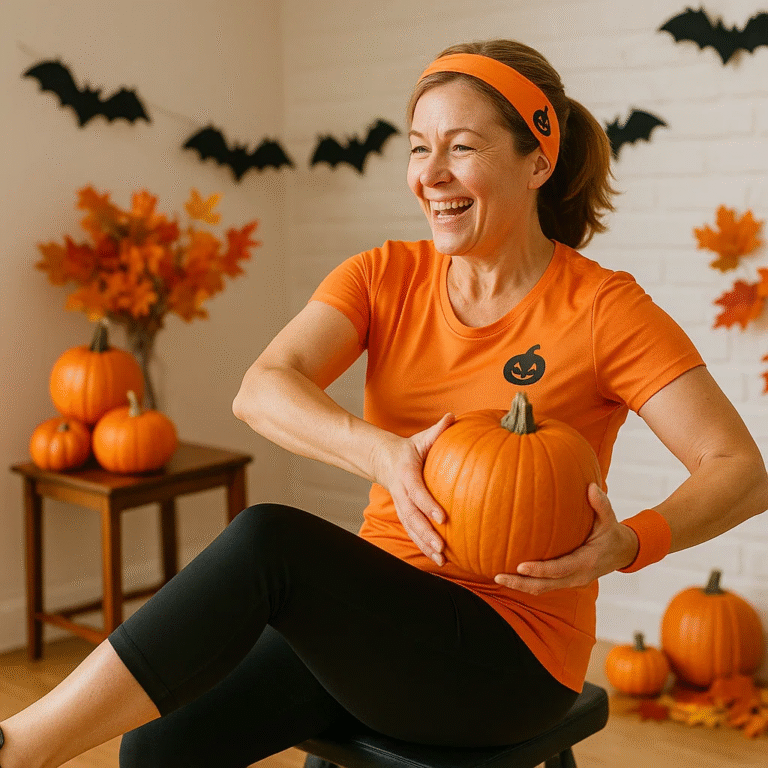
As muscle mass naturally declines and insulin sensitivity shifts with age, excess sugar calories are more likely to contribute to adipose gain and glycemic variability, which cumulatively raise cardiometabolic risk. A typical candy haul can add hundreds of fast-absorbing calories in a short time; repeated episodes contribute to gradual changes in waist circumference and lab markers. Framing treats as deliberate, limited events and offsetting them with increased movement and protein-rich meals helps maintain control. Realistic awareness of these physiological shifts empowers better daily decisions.
What Portion Sizes and Timing Strategies Help Control Candy Intake?
Concrete portion strategies reduce impulsive overconsumption: choose one small treat after a main meal, limit to a fixed daily allotment (e.g., 15 grams of carbs), or place treats in a container and schedule a specific window for indulgence. Pairing candy with a protein-rich snack blunts peak glucose, and avoiding treats within two hours of bedtime prevents sleep disruption and late-night metabolic stress. Behavioral tactics—out of sight storage and sharing excess with neighbors—further reduce temptation. These practical rules help maintain glycemic stability and preserve weight-management gains.
Here is a short list of portion and timing rules to implement immediately:
- Eat treats only after a main meal to reduce glucose spikes.
- Limit to one small piece or 15–20 g of carbs per indulgence.
- Pair sweets with protein or fiber-rich foods to slow absorption.
Applying these simple steps creates predictable boundaries that align with long-term health goals.
Which Healthy Halloween Recipes Provide Nutrients and Fiber for Seniors?
Recipes that prioritize fiber and protein improve satiety and nutrient density: examples include pumpkin-spiced Greek yogurt parfaits topped with walnuts, dark-chocolate-dipped apple slices with a sprinkle of seeds, roasted spiced chickpeas for crunchy fiber, and mini savory pumpkin muffins made with oats and Greek yogurt. Each recipe requires minimal prep, stores well, and serves as both hosting options and personal snacks that reduce reliance on candy. Recommended serving sizes emphasize modest portions—one parfait cup, two dipped slices, or a small handful of roasted chickpeas—to balance enjoyment with nutrition.
How Can Adults Over 40 Incorporate Fitness Into Halloween Safely and Effectively?

Safe integration of fitness during Halloween emphasizes joint-friendly activities, purposeful strength work for bone density, and realistic session durations aligned with CDC guidance for older adults. Prioritize low-impact cardiovascular work, mobility and balance drills, and twice-weekly resistance sessions that load key muscle groups to preserve function. This section gives joint-conscious activity options, explains strength training benefits for bone and muscle maintenance, and offers guidance on weekly durations and intensities that fit holiday schedules.
What Joint-Friendly Halloween Activities Support Mobility?
Low-impact options such as neighborhood walking groups, water-based aerobic sessions, seated dance, and controlled resistance-band circuits provide cardiovascular and mobility benefits with minimal joint stress. Modifications—reduced range of motion, slower tempo, and chair-supported variations—allow participation when arthritis flares or balance is compromised. Monitoring pain and using the talk test or perceived exertion (RPE) guides intensity safely. These activities improve balance, flexibility, and endurance needed for independent living and festive participation.
How Does Strength Training Help Maintain Bone Density and Muscle Mass?
Strength training applies mechanical loading that stimulates bone remodeling and preserves lean mass, counteracting age-related declines that accelerate after 40. Progressive resistance—using body weight, bands, or moderate weights—increases muscle strength, functional capacity, and metabolic rate. Simple protocols, such as two non-consecutive sessions per week targeting major muscle groups with controlled sets and repetitions, are effective and safe when focusing on proper form and gradual progression. Consistency in resistance work is a cornerstone for long-term mobility and metabolic health.
What Are Recommended Exercise Durations and Intensities for Halloween Fitness?
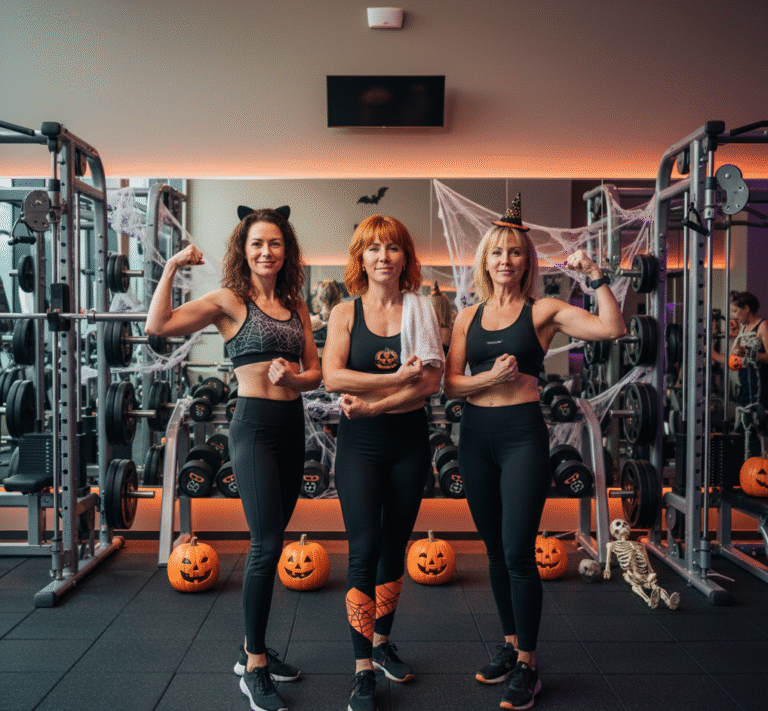
Aim for at least 150 minutes of moderate-intensity aerobic activity per week or 75 minutes of vigorous activity, split into manageable sessions (e.g., five 30-minute walks), plus muscle-strengthening activities on two or more days weekly; during busy holidays, shorter bouts (3×10–15 minutes) are effective and practical. Use the talk test—being able to speak but not sing—as a simple intensity marker, and keep perceived exertion in a moderate range (RPE 4–6 out of 10) for most sessions. Flexibility and balance work can be daily brief sessions that aid recovery and reduce fall risk.
How Can Adults Over 40 Prepare for a Safe and Enjoyable Halloween Night?
Preparation for Halloween night should combine pedestrian safety, home readiness, and costume comfort to reduce risk and maximize enjoyment. A short prioritized checklist—reflective clothing, cleared walkways, battery lighting, stable shoes, and medication planning—ensures you can participate safely whether you’re hosting or trick-or-treating. The final H3s below provide specific pedestrian tips, home preparations, and costume features that enhance comfort and reduce accident risk.
What Are Key Pedestrian Safety Tips for Halloween Night?
Walk on sidewalks and well-lit routes, wear reflective clothing or carry lights, and walk in groups when possible to reduce the risk of traffic incidents; keep a charged phone and avoid alcohol if you’re supervising children or walking long routes. Use crosswalks and make eye contact with drivers, and plan routes that avoid busy streets or temporary hazards like roadwork. For those with mobility limitations, consider driving to a community event or arranging a stroll with a friend or family member to maintain safety and social connection.
How Should Adults Prepare Their Homes for Trick-or-Treaters Safely?
Prepare your home by clearing walkways of cords, toys, and loose rugs, installing battery-operated pathway lighting, and setting up a stable candy distribution station at a comfortable height to avoid bending or stooping. Use non-flammable decorations and keep exits clear in case of emergency; provide hand-sanitizer options and clearly label treats for common allergens. These steps protect both guests and hosts and make hosting accessible and welcoming for older adults.
What Costume Features Enhance Safety and Comfort for Older Adults?
Choose costumes with breathable fabrics, non-restrictive cuts, and short hems to prevent tripping; prioritize supportive, non-slip footwear and test any accessories for comfort before the event. Add reflective tape or small LED lights for visibility, and adapt costumes to fit mobility aids instead of obscuring them. Quick DIY modifications—elastic hems, sewn-on reflective patches, or lightweight capes—can preserve style while ensuring you can move and react safely throughout the evening.
Join a Community That Gets It
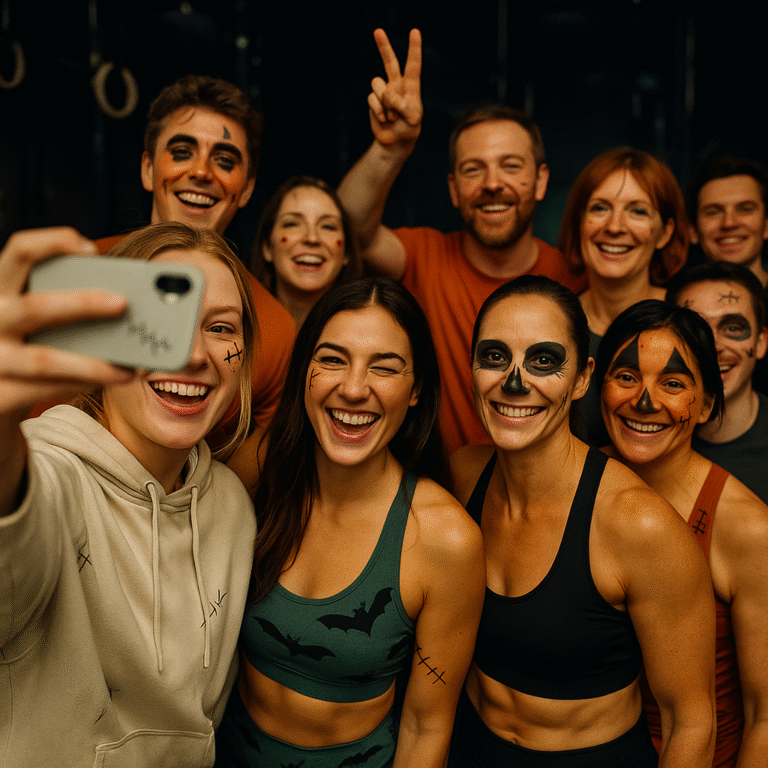
The hardest part about staying fit after 40? Doing it alone.
At Results Transformation Center,you’ll discover a vibrant community of individuals just like yourself—each one navigating the complexities of careers, family life, and the pursuit of health in a world that often makes it challenging. Join us and empower yourself to thrive amidst these obstacles.
Why our members love us:
✅Classes designed specifically for adults 40+
✅Supportive, judgment-free environment
✅Flexible scheduling for busy lifestyles
Unlock Your FREE 3-Day VIP Pass in Your First Month!
👉You can call us NOW at (916) 371-2496and begin your journey to a STRONGER and HEALTHIER YOU! Don’t miss out on this exclusive opportunity!


